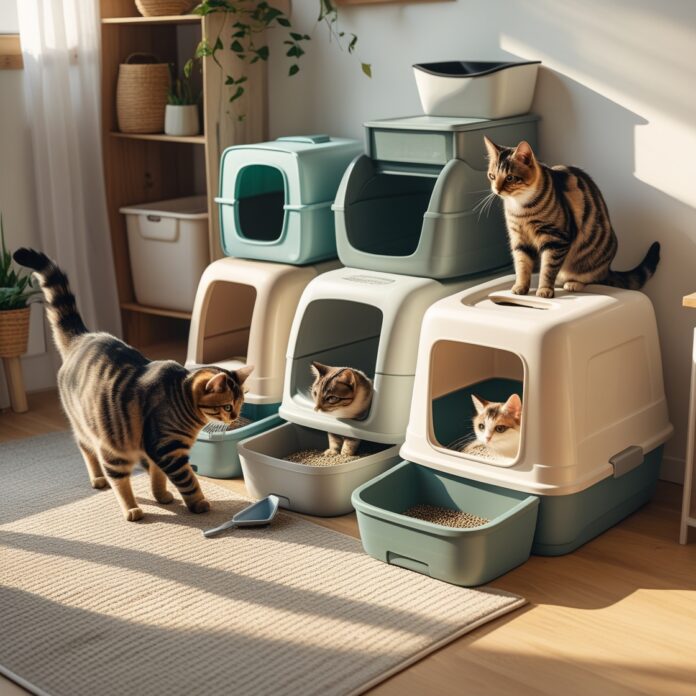Choosing the right cat litter box might seem simple, but it plays a crucial role in your cat’s comfort, hygiene, and behavior. With so many options available—sizes, styles, features—it can be overwhelming. This guide helps you narrow down your choices so your cat stays healthy and happy, and your home stays cleaner and fresher.
1. Choose the Right Size
The length of your cat’s litter box should be at least 1.5 times its length from snout to tail. Larger cats, like Maine Coons, require a spacious box to prevent cramping. Smaller or average-sized cats nevertheless benefit from a roomy space that allows them to turn around comfortably.
Covered litter boxes offer privacy and odor control, but they may feel too confined for some cats, leading to avoidance. Uncovered boxes allow airflow and let cats monitor their surroundings—important for skittish or dominant cats.
👉 Tip: Try both styles if you’re unsure. Observe which one your cat prefers.

2. Covered vs. Uncovered: Which is Best?
Covered litter boxes offer privacy and odor control, but they may feel too confined for some cats, leading to avoidance. Uncovered boxes allow airflow and let cats monitor their surroundings—important for skittish or dominant cats.
👉 Tip: Try both styles if you’re unsure. Observe which one your cat prefers.
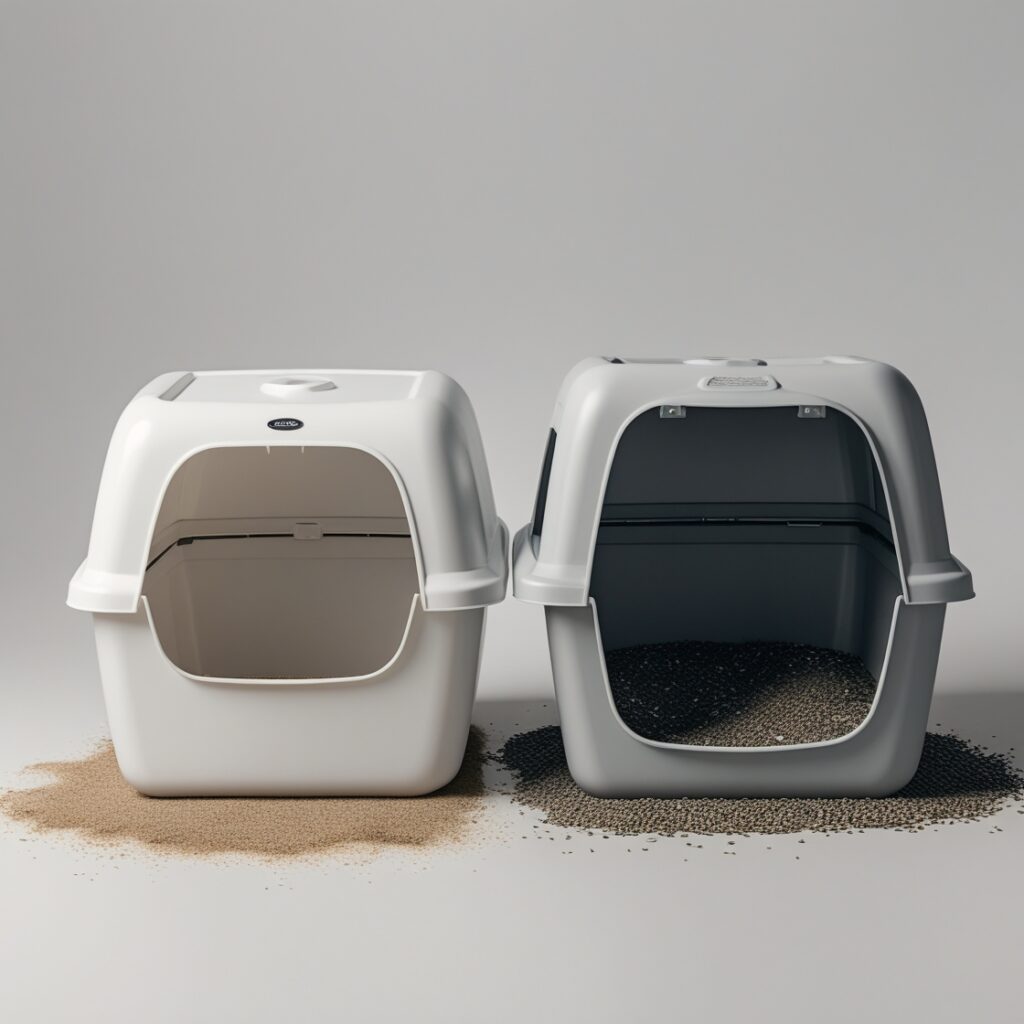
3. Consider Entry Style and Accessibility
Some boxes have front, side, or top entry. Each has pros and cons:
- Top-entry boxes: Contain litter well but can be hard for senior or disabled cats.
- Front-entry or open-top boxes: Easy access, especially good for kittens or older cats.
- Low-sided boxes: Ideal for cats with joint issues or for very young cats.
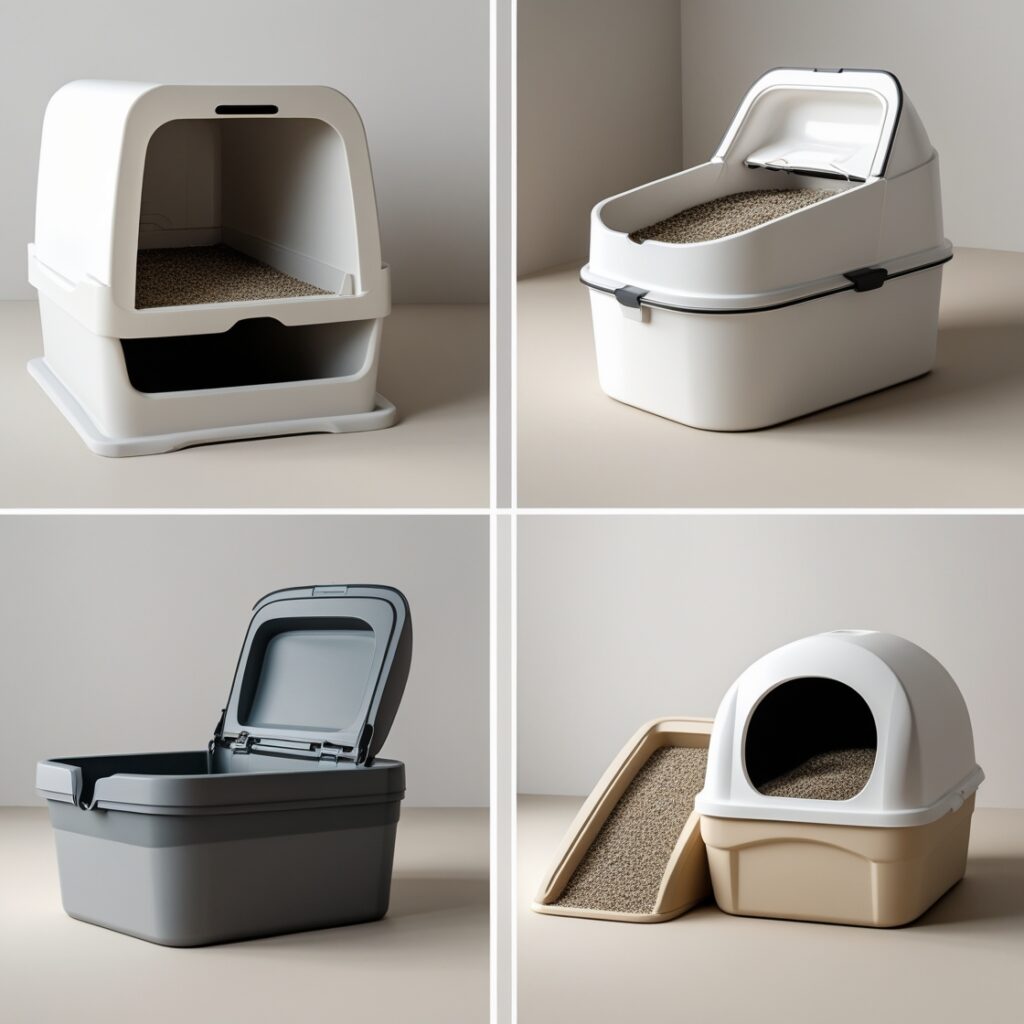
4. Self-Cleaning Litter Boxes: Are They Worth It?
If you’re short on time or dislike scooping, self-cleaning litter boxes are a great option. Automatically, waste is scraped or flushed into a container. But beware: some models can be noisy or intimidating to sensitive cats.
- Monitor your cat’s response before committing.
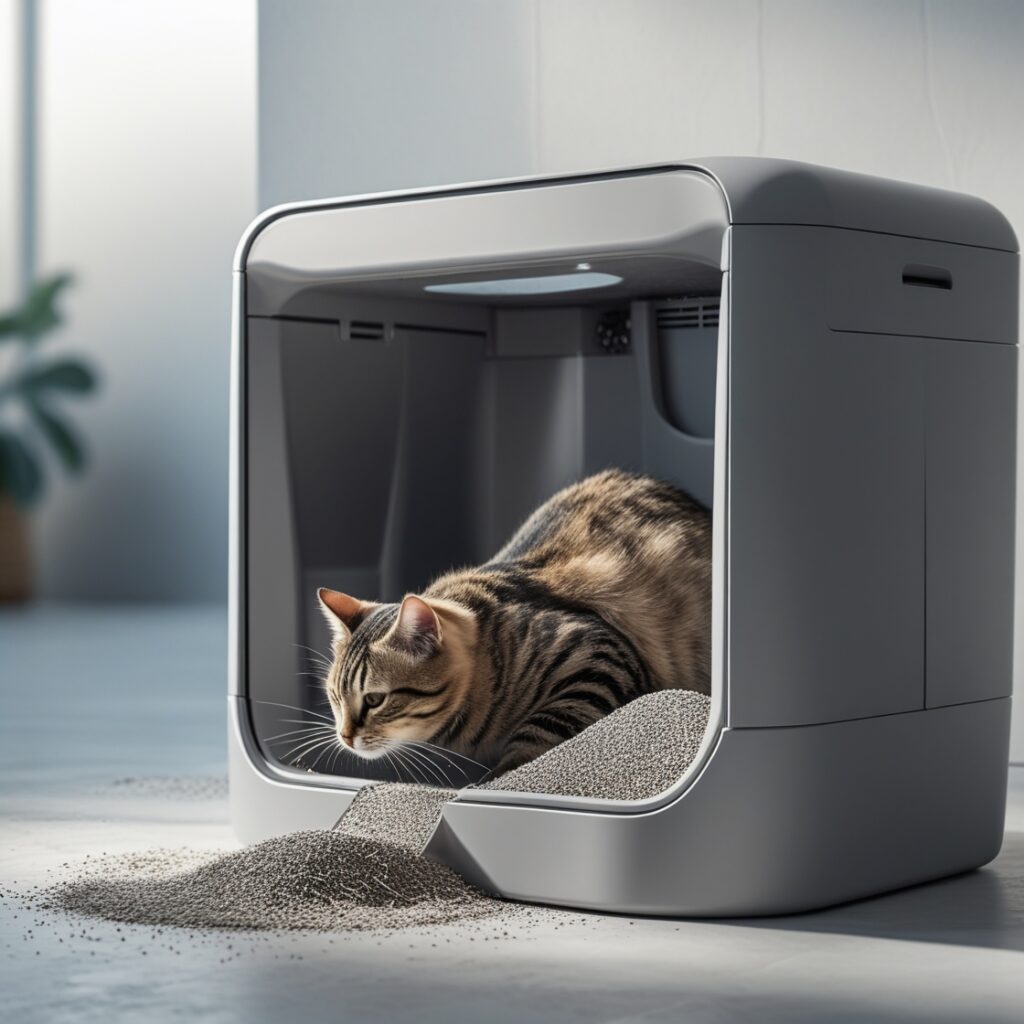
5. Location Matters
Cats want privacy, but not isolation. Avoid placing the litter box in:
- High-traffic areas
- Near loud appliances
- Too close to food and water bowls
Ideal spots include quiet corners of a bathroom, laundry room, or hallway. If you have multiple floors, place a box on each one.
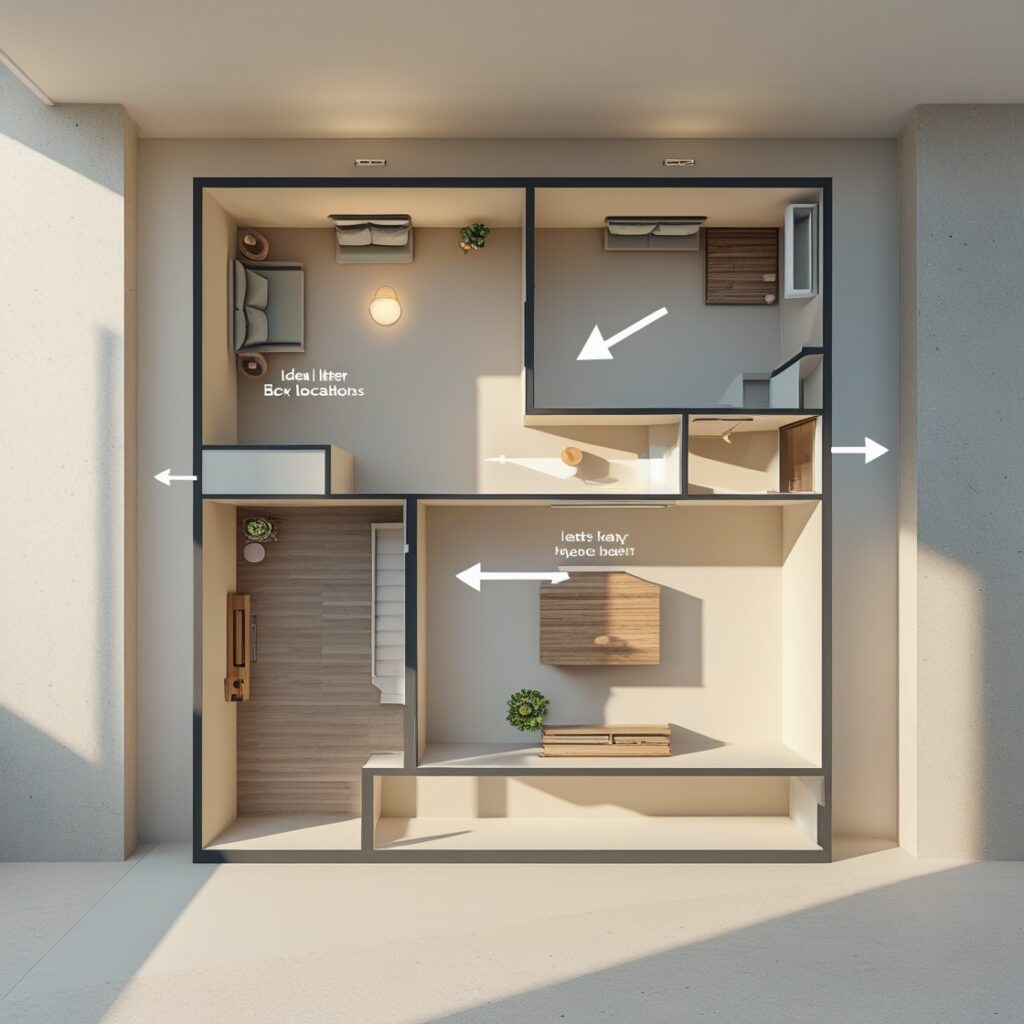
6. One Box per Cat (Plus One Extra)
The golden rule is: 1 litter box per cat, plus one.
In a multi-cat household, sharing can lead to territorial issues, stress, or accidents outside the box. All cats should think they have a safe, reliable place to go.
7. Litter Box Materials and Cleaning Tips
Most boxes are plastic, which is durable and easy to clean. Alternatives include:
- Biodegradable cardboard for short-term use (e.g., travel)
- Stainless steel for odor resistance
🧽 Cleaning tips:
- Scoop at least once daily
- Empty and wash weekly with unscented soap
- Avoid bleach or citrus cleaners—cats dislike strong scents

8. Useful Accessories to Consider
To reduce mess and ease maintenance, consider:
- Litter mats: Trap loose litter at the exit
- Liners: Make clean-up easier (but not all cats like them)
- High-sided boxes: Prevent litter scatter
- Deodorizers: Only use pet-safe options
Conclusion
Choosing the right cat litter box is about understanding your cat’s behavior, preferences, and physical needs. Never be afraid to experiment with different alternatives until you find the one that works best for you. A well-chosen litter box can reduce accidents, improve hygiene, and keep your feline friend content.



